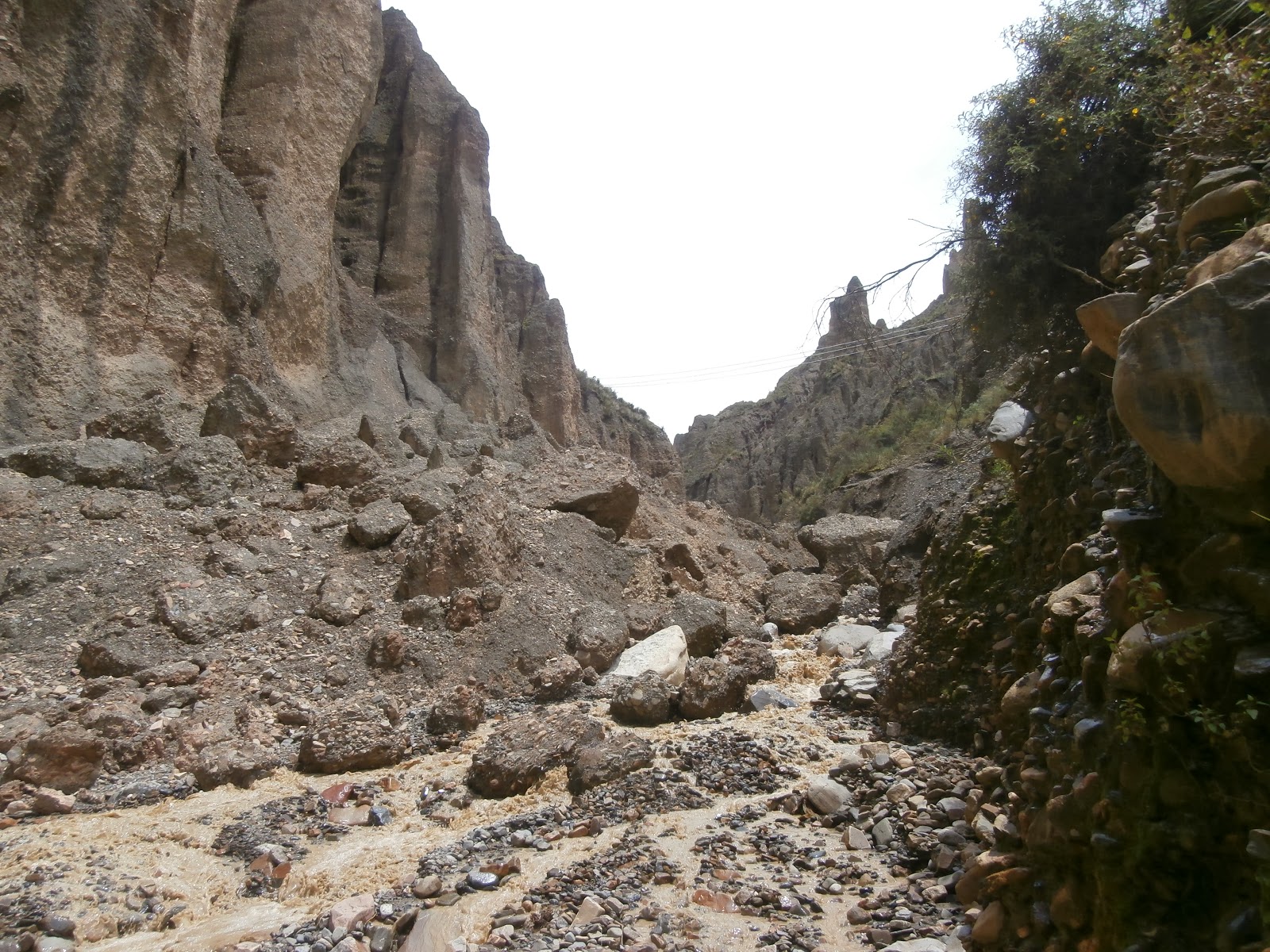On the day that I tried to walk in to the valley a river had burst bringing down ground which meant I could not see the entire expanse of this valley of the lost.
I had seen a painting of it. In my first days in La Paz I had been introduced to an artist. The valley was one of the places that inspired him to paint and he allowed me to quickly photograph an example of his work. The photograph was taken too quickly to be of much assistance in clearly representing the inner valley but it gives me an idea of what I did not see.
On any other day in any other country in any other place I would have been disappointed, but I could not be for I was travelling with a good man. A taxi driver. You know the kind, the unreliable and violent. One of the bunch that were going to rape and abduct me, according to the fables of those who have never been to Bolivia. This man, Gabriel Dennys Molina Perez was not of that type.
Gabriel was 36 years old. He talked to me about Bolivia. He told me there had been progress in Bolivia in recent years. He believed that the centre of the government was doing good things but that this good core were surrounded by helpers and assistants who were robbing the people. He had worked for the government as an engineer, receiving 7000 Bolivianas a month, ( £700). This was good money but year after year the government made more and more deductions from his money until in the end he was left with only 1500 Bolivians. He could not live on this money and so he left engineering.
This is a typically Bolivian biography so it cannot end without a visit to the Virgen of Copacobana. By the time he visited the Virgen , Gabriel's aunt had lent him money for one taxi. Within months of visiting the Virgen he had money for another. Within another short period of time following his visit, he had opened a workshop selling tracksuits, ( one of which he was wearing). The business is a success and he now employs eight employees.
He is I believe a good man. Not only because he had attached a badge of the Virgen of Copacabana to his dashboard but because of the way he behaved with me.
He pointed out every mountain, every flower and river, giving me its name. He took me through the small pueblitos of Ovejuyo and Chasquipampa, writing down their names and the names of the flowers and the mountains so I would not forget them. He took time on the high unsafe roads, even though in his house his wife children and twelve relatives were starting their sunday lunch.
He explained about the practice of the villagers in the small villages to all participate and help each other if there was a problem with any one piece of land. A piece of information that allowed me to make sense of what exactly the group of Aymara were doing with pick axes and forks on a distant hill.
The true indicator of the goodness within Gabriel was that he was prepared to stick with Bolivia and give it a chance. He believed if he worked hard he would succeed in spite of the corruption and the difficulties of his life. He had friends working in the United States who were earning much more money than he was. He had been told if he would just leave Bolivia he would earn more and could send money home to his family. What good was that he told me if I do not see my kids every day?
I love Bolivia, he said, and after two weeks here, I could understand why.












No comments:
Post a Comment